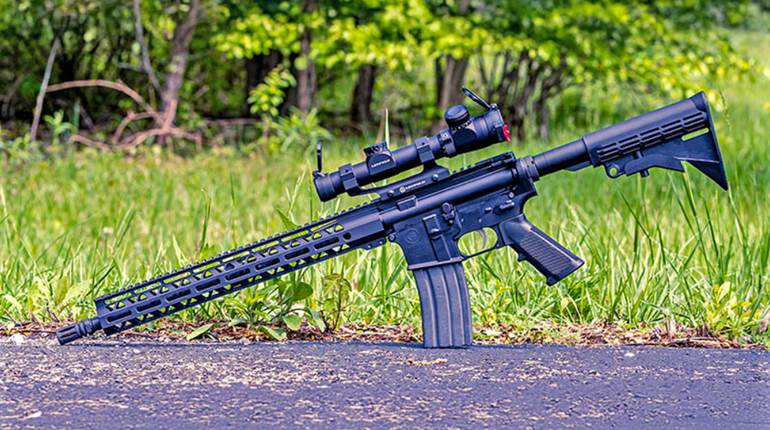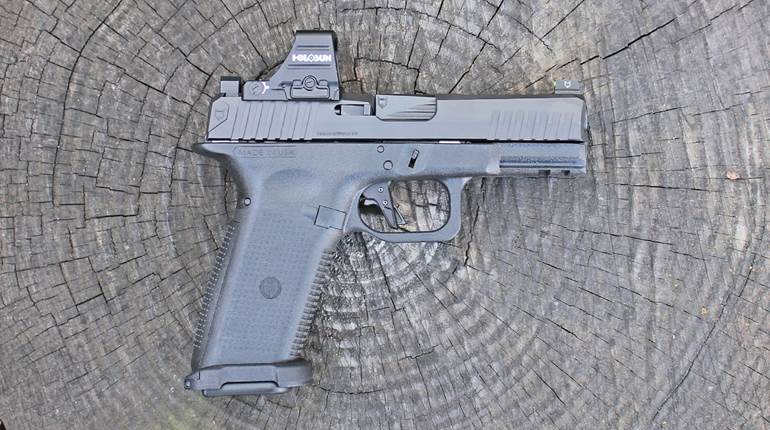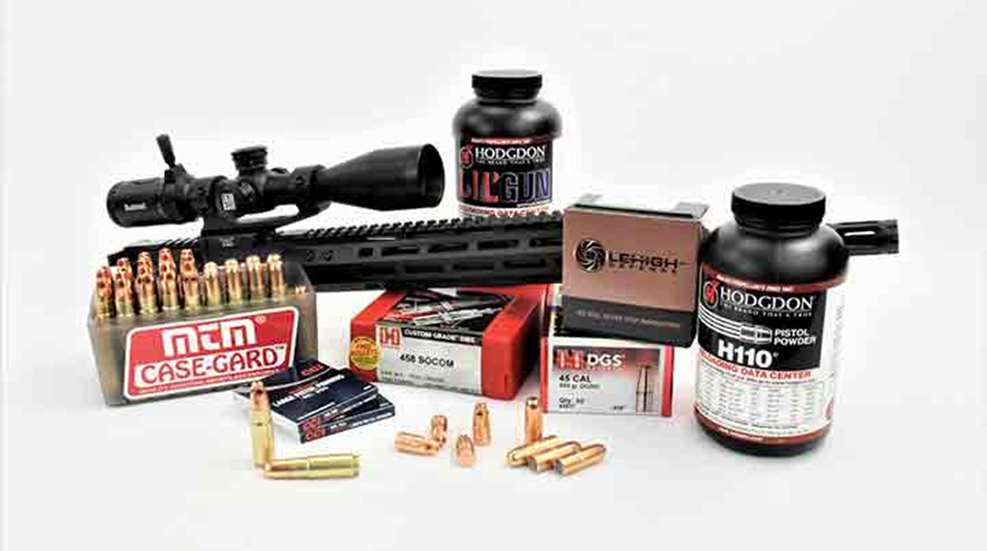
Owning an AR-15 that is chambered in an off-beat cartridge has its advantages. Take .458 SOCOM, for example. While the world is scrounging for 5.56x45 mm NATO these days, those who enjoy a firearm that feeds on exotic chambering usually have a little warning before having to scramble for ammunition. Of course, those who reload don't have to concern themselves much at all; just as long as they have a supply of components.
As the 0.458” diameter bullet is far less popular than the 0.224” needed to build the .223 Rem. or 5.56x45 mm NATO round, I decided it would be safe to embark on a SOCOM handloading journey, even in 2021. Ever since I sent my first .458 SOCOM rounds downrange, I was hooked. I absolutely love this cartridge for short-range hunting, and whacking steel with it is just a hoot. The only reason I barely shoot it is because it costs so much to feed.
Handloading would change that and also get me to the range when rounds are scarce. Practicing what I preach, I started my homework with the AR-15 Reloading Handbook from Lyman Products, now in its second edition. As I flipped past the “lesser” cartridges, I arrived at the .458 SOCOM section and glanced over the initial load data. I was quite surprised with some of the components required to recreate this monster. For starters, it takes a large pistol magnum primer to ignite.
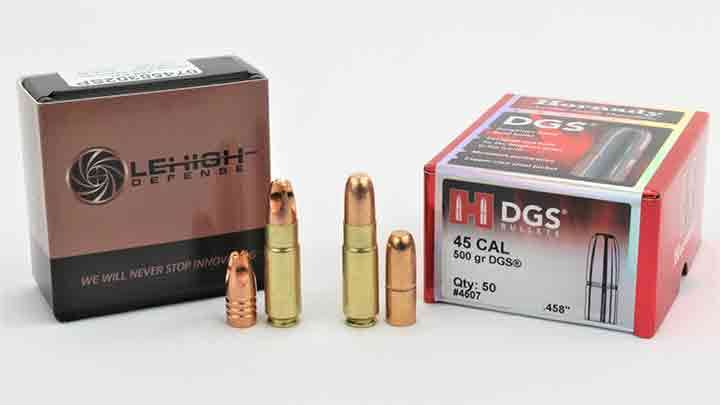
For such a big cartridge designed for a long gun, this wouldn’t have been my first guess. Luckily I had some CCI 350s in the cabinet, which are known for their thick cup, making me feel a little better about putting my face next to this controlled explosion. Furthermore, this style primer isn’t being hounded after right now, so it plays into my “load what you can” motif quite well.
Of the powders listed, H110 wasn’t a shock, as the SOCOM has a .44 Mag. feel to it, but what wasn’t expected was the inclusion of data for Lil’ Gun because frankly, .458 SOCOM is a big cartridge. The last time I used that stuff was during an attempt to reload .22 WMR.
Moving on to bullets, I saw a few familiar faces on these pages. Over the past few years, I have been gravitating to Lehigh Defense projectiles, because the company delivers the small-batch consistency that the big guys just can’t match. I’m also impressed in how it gets those unconventional designs to fly as straight as they do.
In the data, there was everything needed to build a round with the 302-gr. Xtreme Penetrator, something that I hope to use for whitetail deer this fall. The book also listed information on building sub-sonic rounds featuring the monstrous 500-gr. Hornady DGS bullet. The data was interesting for these bullets, as Lyman used a “take it or leave it” approach. The company lists “19 grains” of Lil’ Gun and advise that going lower might result in bullets not leaving the barrel, and higher might send the bullets fast enough to break the sound barrier.
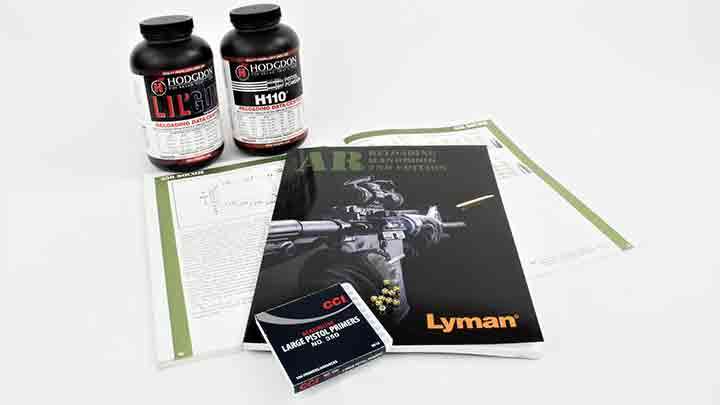
After some thought, I decided that I would load a few rounds at the recommend 19.0 grains and some at just 19.3 grains in case I had cycling issues. I used a Lyman Pro 1200 Tumbler to shine up the brass that I’ve been saving. Although it came from over a dozen different brands of loaded ammunition, nearly all of it was made by Starline, except for those that bore the Xtreme headstamp.
I separated those for use in the subsonic loads and set up my press with my Hornady custom .458 SOCOM dies. I also found these pretty easily on the internet, again because there are far fewer SOCOM uppers out there. I immediately got to work putting together rounds with the H110 and the 302-gr. Lehigh pills. I made a round of load development in 0.3 grain increments and set my seater die to seat these with just a touch of crimp.
Typically, I build my AR rounds so that they barely fit into the magazine. This gets me as close to the lands as possible. However, at magazine length, the Lehigh bullets still had a ways to go to clear the third and final ridge of the bearing surface. Be that as it may, I had to go a little deeper and sat these down to wind up with an overall length of 2.165”. I finished the job by neatly labeling an MTM ammunition box and arranged these rounds for easy identification during my range day.
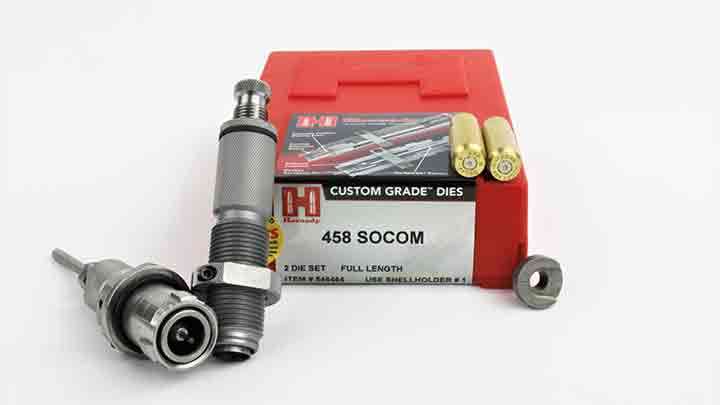
Moving into subsonic territory, I grabbed the Hornady DGS bullets and weighed out some charges. While these bullets had a cannelure, I had to seat them well beyond it to get them into a magazine. I sat the rounds down to an overall length of 2.252” and employed that same eighth turn of crimp that I used on the supersonic rounds. If you follow my work then you know how I feel about crimping, I absolutely hate it.
However, when I'm not sure what to expect I always like to start with a small amount. If the round performs well without sinking into the case then I usually experiment with less crimp right away before finalizing a load. The main reason for my disdain for crimp is that I can't accurately quantify the amount and repeat it. I just referenced a measurement down to 0.001”, only to follow it up with the crude finishing touch of a slight turn.
Besides, even if you do get it right, a few thousandths worth of case length changes the intensity of this crimp from case to case. Range day brought me Archbald, PA at just a few minutes past dawn. I started with the subsonic load at the 50-yard line and tabulated an average velocity of 1,032 f.p.s. from my 10-round string of the 19.0-gr. charge weight of Lil’ Gun. While this was a good deal below the supersonic threshold, the rounds didn’t produce a usable group, nor cycle the gun.
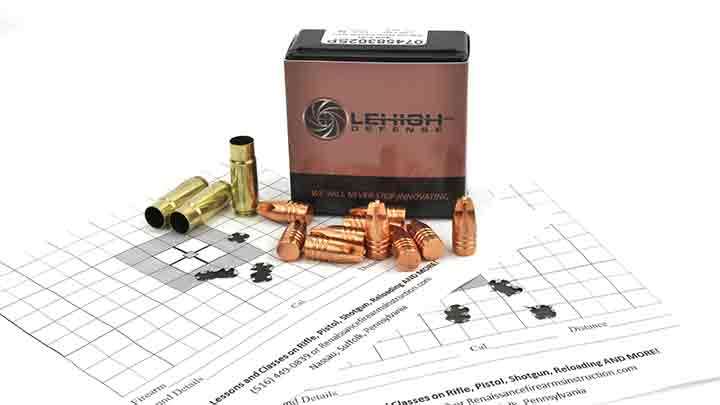
Moving on to the 19.3-gr. load we were able to reach a 10-shot average of 1,049 f.p.s., but still didn’t see a hint of cycling and far too many shots were off of the paper to consider this round to be effective. I think that there is still room to make this combination work, as we have about 100 f.p.s. of wiggle to play with and still stay subsonic, I just need to find some data that suggests it’s safe. Moving over to the supersonic rounds, I opted to stretch things out a bit.
As the Lehigh Defense loadings had more velocity to them, I decided to test them at 100 yards. Things were off to a great start and only improved as we increased powder charge. With each increment, I saw groups tighten up and cycling improve. As I approached the last three highest loads we saw our best accuracy and good five-for-five cycling. During the process, we reached a maximum velocity of 1,591 f.p.s. and a minimum five-shot group size of 1.48”. As I packed up my gear, I was impressed with the final round that I created but a little bummed that I couldn’t get the 500-gr. bullets to run or group.
The beauty of the AR platform is that with just a swap of a buffer and spring you can easily tweak it to run problematic loads. I believe that I will start there and perhaps try a few different powders to see if there’s one that pulls the group together and runs well. If nothing else, this tinkering is going to be a great way to pass the time while I wait for 5.56x45 mm NATO to return to the shelves. If you have an oddball AR-15 or any rifle for that matter, 2021 just might be the perfect time to work up a load.













